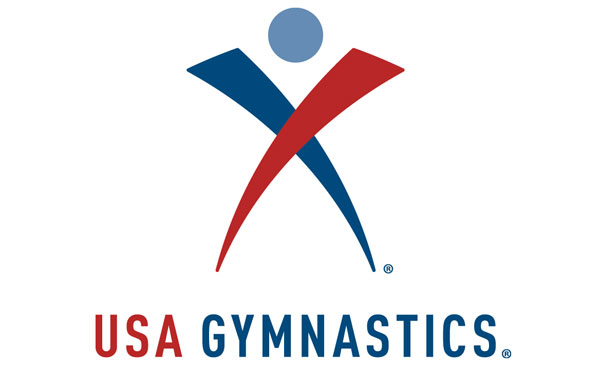
- Safe Sport Policy, Snapshot and Frequently Asked Questions
- Community Message from Li Li Leung
- Updated policy strengthens athlete safety measures and puts athlete safety and well-being at forefront
- Policy includes clear definitions of misconduct and Prevention Policies
- USA Gymnastics and others to offer training, education to build awareness for members and member clubs
INDIANAPOLIS, June 19, 2019 – USA Gymnastics today released its updated Safe Sport Policy, which is the foundation for rules, policies and responsibilities for athlete safety and well-being and the prevention of abuse. The 2019 policy encompasses the requirements of the “SafeSport Code for the U.S. Olympic and Paralympic Movements” and federal laws, including the “Protecting Young Victims and Safe Sport Authorization Act of 2017.”
“The Safe Sport Policy is part of our plan to build a culture that prevents the opportunity for abuse to occur, and where everyone plays an important role in the protection of athletes and all members,” said Li Li Leung, president and CEO of USA Gymnastics. “The policy is the foundation of our efforts to foster a safe, positive and encouraging environment where athletes and professional members alike can thrive and enjoy the sense of accomplishment of achieving goals and dreams, whether it is learning a basic skill, competing locally or representing the United States on the international stage.”
“Education, resources and accountability are key factors to successful implementation of this policy,” said Julie Springwater, an independent director on the USA Gymnastics Board of Directors and chair of its Safe Sport Committee who specializes in child welfare and positive youth development. “Our plan is to provide our members and member clubs ample opportunities to become very familiar with the policy requirements and have access to the resources they need to utilize them effectively. The involvement of everyone in our entire community – athletes, parents, professional members, club owners, meet directors and staff – is critical for our athlete safety initiatives to be effective and successful.”
In developing the 2019 policy, USA Gymnastics relied on input from both inside and outside of the gymnastics community. The USA Gymnastics Safe Sport Committee, the recommendations in the USA Gymnastics-commissioned Deborah Daniels report, the United States Olympic Committee and the U.S. Center for SafeSport provided guidance for the policy. USA Gymnastics also relied on input and insights from athletes, coaches, club owners, parents, abuse survivors and outside experts in mental health, health care, child advocacy and youth development.
“Because this policy is the result of a collaborative effort, it provides both protection for athletes and guidance for all involved in the sport,” said Leung. “This policy eliminates many of the gray areas and more clearly defines misconduct, the behaviors that need to be prevented, and the responsibilities for members and those involved in member clubs.”
The education and training component will be instrumental in building awareness of and familiarity with the Safe Sport Policy and the associated process. During the summer months, USA Gymnastics is offering a series of free webinars about the updated policy. The Safe Sport Department is presenting multiple sessions on the policy and other safe sport topics at Regional Congresses and the National Congress and Trade Show, as well as speaking with the various national teams about this important topic. A snapshot overview of the policy, frequently asked questions, and additional information are available at usagym.org/safesport.
“As a survivor of abuse myself, I’m encouraged to see USA Gymnastics taking the initiative to put athletes and their safety first,” said Marcie Schwartz, a former competitive gymnast. “In reviewing the updated Safe Sport Policy, I truly believe that the detail and the clarity — on what is and is not acceptable behavior between an athlete and coach — could have protected me.”
The Athlete Assistance Fund, established by the National Gymnastics Foundation, is also sponsoring sessions on child abuse awareness and prevention at the National Congress. USA Gymnastics will roll-out a robust educational program that has age-specific content for athletes and gymnastics-specific programming for professional members and parents.
“Athletes are the heart and soul of USA Gymnastics; our professional members are the backbone; and the member clubs are the foundation,” said Leung. “We pledge to work collaboratively with our members and the community to become an athlete-centric organization that keeps athlete safety and well-being at the forefront.”
The policy outlines the following.
- The authority and jurisdiction of both USA Gymnastics and the U.S. Center for SafeSport.
- Mandatory reporting and where the different types of misconduct and policy violations should or must be reported.
- Seven categories of reportable misconduct: sexual, emotional, physical misconduct, stalking, bullying behavior, hazing, and harassment.
- Five categories of misconduct related to reporting and process: aiding and abetting; failure to report; intentionally filing a false allegation; abuse of process; and retaliation.
- Ten Prevention Policies that set boundaries between professional and athlete members: one-on-one interaction; travel; social media and electronic communication; photography and videography; locker room and changing areas; gifting; massaging, taping and icing; stretching and other physical conduct; drugs and alcohol; and parental access to training.
Based in Indianapolis, USA Gymnastics is the national governing body for gymnastics in the United States. The organization is committed to creating a culture that encourages and supports its athletes and focuses on its highest priority, the safety and well-being of the athletes. USA Gymnastics has taken specific, concrete steps to strengthen its athlete safety policies and procedures. The organization’s disciplines include men’s and women’s artistic gymnastics, rhythmic gymnastics, trampoline and tumbling, acrobatic gymnastics and gymnastics for all (formerly known as group gymnastics). For more complete information, visit usagym.org.




